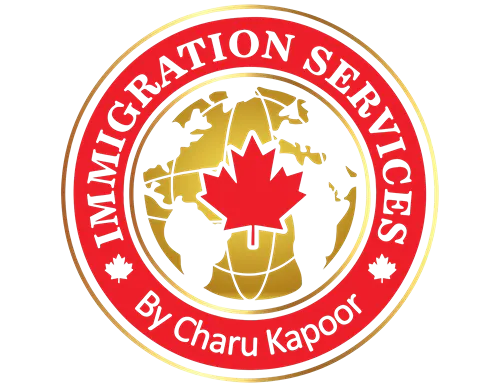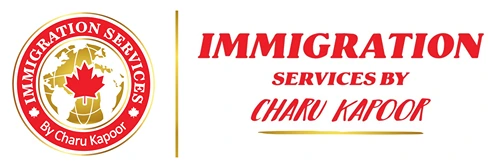Provincial Nominee Programs (PNPs)
Canada’s provincial nominee programs (PNPs) present a specialized route to attain Canadian permanent residence for individuals aspiring to settle in a particular Canadian province or territory. These programs are tailored to align with the distinct economic and demographic requirements of each region.
In a decentralized approach, every Canadian province and territory administers its own PNP, meticulously crafted to cater to their unique needs. This diversity ensures that aspiring immigrants with skills, experience, and attributes relevant to a specific region can find an avenue to contribute effectively to that area’s growth and development.
For those seeking insight into the process of immigrating to Canada as a provincial nominee and staying abreast of the latest developments in Canadian PNPs, continue reading. This comprehensive resource provides information on how to navigate these tailored immigration pathways and offers updates on the ever-evolving landscape of provincial nominee programs across Canada.


Discover your Canadian
Immigration Options
What are Provincial Nominee Programs?
With the exception of Quebec and Nunavut, each province operates multiple streams within its Provincial Nominee Program (PNP). These streams are custom-designed by provinces to align with their distinct immigration objectives, leading to variations in eligibility criteria and application procedures. The appeal of PNPs lies in their popularity as a relatively straightforward pathway to achieving Canadian permanent residence.
While the provincial governments play a pivotal role in managing PNPs, decisions pertaining to Canadian permanent residence necessitate approval at the national level by the federal government. Consequently, the provincial programs are termed “nominee” programs as they involve the nomination of applicants by the province. A successful PNP applicant receives a provincial nomination, which then allows them to apply to the federal government for permanent residence. This establishes a two-step process for immigration to Canada through a PNP: obtaining provincial approval as the initial step and subsequently applying at the federal level.
Provinces and Territories
Except for Nunavut and Quebec, each Canadian province and territory administers its distinctive Provincial Nominee Program (PNP) tailored to fulfill its specific economic and demographic requirements. The criteria for the programs and the process for applying differ significantly among provinces. Hence, individuals interested in applying should engage with each province individually to ascertain their eligibility and comprehend the relevant application procedures.
1. Alberta
Alberta’s Provincial Nominee Program (PNP) offers various streams catering to skilled workers, graduates, and entrepreneurs. The Alberta Immigrant Nominee Program (AINP) aims to address labor market needs and encourage economic growth by nominating individuals with relevant skills and qualifications for permanent residency.
2. British Columbia
With a focus on attracting skilled workers, international graduates, and entrepreneurs, the British Columbia Provincial Nominee Program (BC PNP) aligns with the province’s economic priorities. It encompasses streams targeting technology professionals, healthcare workers, and other high-demand occupations.
3. Manitoba
Manitoba’s Provincial Nominee Program (MPNP) emphasizes skilled workers, international students, and business investors. Through various pathways, MPNP selects candidates who demonstrate a commitment to contributing to the province’s workforce and economy.
4. New Brunswick
The New Brunswick Provincial Nominee Program (NBPNP) seeks to address labor market gaps by nominating skilled workers, graduates, and entrepreneurs. It offers streams for Express Entry candidates and those with connections to the province.
5. Newfoundland and Labrador
The Newfoundland and Labrador Provincial Nominee Program (NLPNP) targets skilled workers, international graduates, and entrepreneurs who can contribute to the province’s economic development. Streams like the Express Entry Skilled Worker and International Graduate categories are designed to address specific labor market needs.
6. Northwest Territories
The Northwest Territories Nominee Program (NTNP) supports the economic development of the region by nominating skilled workers, semi-skilled workers, and critical impact workers. It aims to meet the labor needs of the territory while enhancing its population growth.
7. Nova Scotia
The Nova Scotia Nominee Program (NSNP) emphasises attracting skilled workers, international graduates, and entrepreneurs who align with the province’s economic and labor market priorities. Streams like the Nova Scotia Demand: Express Entry and Entrepreneur categories are key components of the program.
8. Ontario
The Ontario Immigrant Nominee Program (OINP) aims to meet the province’s economic needs by nominating skilled workers, graduates, and business investors. Streams such as the Human Capital, Employer Job Offer, and Entrepreneur categories contribute to Ontario’s growth.
9. Prince Edward Island
The Prince Edward Island Provincial Nominee Program (PEI PNP) focuses on addressing labor shortages and enhancing population growth. It nominates skilled workers, graduates, and entrepreneurs who can contribute to the province’s economy.
10. Quebec
Quebec operates its own immigration system distinct from the Provincial Nominee Program (PNP) framework followed by other Canadian provinces. Instead of a PNP, Quebec has its immigration programs and selection criteria that are managed by the provincial government. The province has agreements with the federal government that allow it to have a significant level of autonomy in selecting immigrants who will settle in Quebec. This unique arrangement enables Quebec to tailor its immigration policies to its specific cultural, economic, and social priorities. Therefore, Quebec’s immigration approach is separate from the PNP model and is governed by its own regulations and programs.
11. Saskatchewan
The Saskatchewan Immigrant Nominee Program (SINP) targets skilled workers, international graduates, and entrepreneurs who align with the province’s economic priorities. Streams like the International Skilled Worker, Saskatchewan Experience, and Entrepreneur categories cater to different needs.
12. Yukon
The Yukon Nominee Program (YNP) seeks to attract skilled workers, critical impact workers, and business nominees. Through various streams, YNP contributes to the territory’s economic development and labor market needs.
How to apply for a Provincial Nominee Program in Canada?
Step-by-Step Guide to Applying for a Canadian PNP:
- Identify the Suitable PNP: Explore the list of provinces and territories to decide where you intend to immigrate. Review the criteria for each PNP to ascertain your eligibility.
- Apply to Your Chosen PNP: Directly submit your application to the province or territory of your preference.
- Acquire a Provincial Nomination Certificate: If your application gains approval, the province or territory will nominate you for Canadian permanent residence.
- Complete Permanent Residence Application: Apply to the federal government of Canada for permanent residence. If your chosen PNP aligns with Express Entry, you can complete this process online. Alternatively, for non-Express Entry aligned PNPs, you’ll need to submit a paper-based application.
How to apply to through the ‘base’ PNP process?
Certain PNPs do not necessitate an Express Entry profile for application, falling under the category of ‘base’ PNPs. While the nomination procedures vary across these programs, the overall process can be outlined as follows:
- Apply for Nomination: Initiate the nomination application process.
- Upon Nomination, Apply for Canadian Permanent Residence via the Permanent Residence Portal.
- After receiving nomination from a Canadian province or territory, you can proceed to submit your Canadian permanent residence application through the Immigration, Refugees and Citizenship Canada (IRCC) online Permanent Residence Portal.
It’s important to note that base PNP permanent residence applications tend to have longer processing times compared to electronic submissions made through the Express Entry system. While Express Entry applications are typically processed within an average of 6 months, paper-based applications via the base PNP route take an average of 18 months for processing.
How to apply through the Express Entry Process?
Follow these steps to navigate the process of applying for a Provincial Nominee Program (PNP) through the Express Entry system:
- Create Your Profile: Begin by setting up an account and submitting your Express Entry profile.
- Apply to Express Entry-Aligned PNP: Apply to a PNP that is aligned with the Express Entry system.
- Receive Express Entry Stream Nomination: Once nominated through an Express Entry stream, your profile gains a significant boost of 600 additional points.
- Confirm and Elevate: Confirm the Express Entry nomination on your profile, which leads to an augmentation of 600 extra points.
- Wait for Invitation: Subsequently, await an invitation to apply for Canadian permanent residence.
- Apply for Permanent Residence: Upon receiving an invitation, submit your application for Canadian permanent residence within the Express Entry system.
It’s important to acknowledge that the PNP processes can differ across provinces, resulting in various methods for applying and obtaining a nomination through the Express Entry system. Some PNPs continuously accept applications from eligible candidates, allowing you to apply at your convenience once you qualify. In contrast, others employ an Expression of Interest (EOI) approach, where eligible applicants submit profiles that are ranked based on a points system, with the potential to receive an invitation for nomination. Lastly, some PNPs invite foreign nationals to apply through various methods, either directly from the Express Entry pool or by soliciting formal Expressions of Interest.
Given the potential intricacies of the PNP application process, it’s crucial to exercise caution to prevent refusals due to submission errors or incompleteness. Applicants should ensure that their applications are meticulously completed and channeled through the correct platform to optimize their chances of success.
How many PNPs are there in Canada?
Except for Quebec and Nunavut, every Canadian province and territory administers its distinct Provincial Nominee Program (PNP), encompassing a range of specialized streams. This diverse array of PNPs collectively amounts to over 80 distinct programs across the country.
These PNPs are tailored by each province and territory to address their unique economic, labor market, and demographic needs. By offering an assortment of streams within each PNP, these programs cater to a wide spectrum of skilled workers, international graduates, entrepreneurs, and other eligible candidates seeking a pathway to Canadian permanent residency.
As a result, the PNPs contribute significantly to Canada’s immigration landscape by facilitating the selection of candidates who can effectively contribute to regional development and meet specific provincial and territorial priorities.
Express Entry Provincial Nominee Programs
Introduced in 2015, Canada unveiled the Express Entry system, revolutionizing the management of permanent residence applications across key economic immigration programs. Over the years, several Canadian provinces and territories have crafted ‘enhanced’ Provincial Nominee Program (PNP) streams, designed to synchronize seamlessly with the Express Entry framework. This alignment signifies that certain PNPs necessitate an applicant to possess an Express Entry profile as a prerequisite for meeting the PNP’s eligibility criteria.
When an applicant secures a nomination through an Express Entry-aligned PNP, they are granted an additional 600 points in the Comprehensive Ranking System (CRS). This augmentation virtually assures their receipt of an Invitation to Apply (ITA) for permanent residence in the subsequent Express Entry draw. Conversely, if an applicant is nominated via a PNP not associated with Express Entry, they must proceed with a non-Express Entry federal application for permanent residence as a provincial nominee. It’s important to note that these non-Express Entry federal applications for permanent residence often entail notably longer processing times compared to the swifter electronic procedures of the Express Entry system.
How much does it cost to immigrate through a PNP?
The expenses associated with immigrating through a Provincial Nominee Program can vary between approximately $2,300 to $3,800 CAD, contingent on the specific program you are utilizing. While some provinces waive processing fees for applicants, others, like Ontario, may impose fees as high as $1,500 CAD.
Cost Breakdown:
- Language Tests: Average cost – $300
- Educational Credential Assessment (ECA) (if applicable): Average cost – $200
- Biometrics: $85 per person
- Government Fees: $1,325 per adult & $225 per child
- Medical Examination Fees: Average cost – $450 per adult & $250 per child
- Police Clearance Certificates: Average cost – $100 per country
- Provincial Nominee Program Processing Fees: Up to $1,500 CAD
The cumulative expenditure ranges from approximately $2,300 to $3,800 CAD, encompassing the diverse elements involved in the immigration process through a Provincial Nominee Program. It’s important to be aware of these financial considerations when planning your immigration journey.
Can I immigrate through a PNP without a job offer?
A plethora of Provincial Nominee Programs (PNPs) offer attractive pathways for international candidates who do not possess a pre-existing job offer in Canada. These specialized programs are particularly tailored to cater to individuals equipped with valuable skills or pertinent work experience, poised to bridge critical labor market or demographic gaps within the respective provinces.
These PNPs stand as a testament to Canada’s commitment to addressing the unique requirements of each region, acknowledging the significance of having a diverse pool of skilled immigrants who can contribute actively to the local economy and society. By targeting candidates with the potential to fill specific gaps, these programs not only facilitate individual immigration journeys but also enhance the overall workforce and socio-economic landscape of the province. Thus, they play a pivotal role in ensuring a harmonious alignment between immigration policies and the practical needs of different Canadian provinces.
Am I eligible for a Canadian PNP?
If you hold a connection to a specific province or possess work experience and skills that align with in-demand fields, you might meet the eligibility criteria for a Canadian Provincial Nominee Program (PNP).
Eligibility parameters for PNPs exhibit diversity across provinces, reflecting their role within the broader economic immigration strategy. Structured to attract individuals capable of making immediate contributions to the local economy and likely to establish long-term ties, PNPs often prioritize applicants with expertise in occupations identified as sought-after in the respective region. Additionally, some PNPs give weightage to candidates with existing ties to the province, such as family members, as this connection enhances the likelihood of them settling in and positively impacting the province.
Generally, success within economic immigration pathways is enhanced for younger applicants equipped with robust language proficiency, higher educational levels, and valuable skilled work experience. If these attributes align with your profile, you stand a stronger chance. Alternatively, it’s advisable to review the aforementioned list of PNPs to discern the distinct eligibility criteria applicable to each program, ensuring a comprehensive understanding of your qualification prospects.
What are the requirements for Canada’s PNPs?
Provinces and territories actively seek candidates with work experience aligned to the specific demands of their local labor markets, frequently accompanied by specific language proficiency and educational prerequisites.
Individual provinces exercise autonomy in establishing their unique eligibility criteria, encompassing language proficiency benchmarks, educational attainment standards, and specialized skill prerequisites. Beyond these qualifications, a crucial criterion involves demonstrating your potential to make a meaningful economic contribution to the region while harboring a sincere intent to establish lasting roots within the designated province or territory.
This personalized approach underpins Canada’s commitment to harmonizing the immigration process with the distinct requirements and priorities of each locality. By carefully evaluating the interplay of skillsets, language abilities, and genuine commitment, provinces and territories ensure that successful candidates can seamlessly integrate into the local workforce and contribute positively to the region’s economic prosperity.
What is the processing time for a PNP application?
The processing durations for nomination applications exhibit variation across provinces, commonly spanning a few months as each province undertakes its evaluation.
Embarking on the journey towards Canadian permanent residence through a Provincial Nominee Program (PNP) involves a sequential two-step procedure. In the initial phase, your application is directed towards the respective province for review and assessment. Following successful provincial approval, the subsequent step entails the submission of your application to the federal government, which exclusively holds the authority to confer Canadian Permanent Residency. The timeline for processing your permanent residence application hinges upon whether you submitted an application under the ‘base’ or ‘enhanced’ category of the PNP.
By engaging in this comprehensive approach, Canada ensures that both provincial and federal perspectives are harmonized to guarantee the eligibility of candidates, while also accounting for the particularities of each province’s criteria. This two-step framework underscores the synergy between provincial and federal authorities in facilitating a seamless and thorough immigration pathway for aspiring permanent residents.
Can I qualify for a PNP if I don’t qualify for Express Entry?
While many Provincial Nominee Programs (PNPs) stipulate an imperative for applicants to hold an active Express Entry profile, certain exceptions prevail. In certain instances, some provinces extend nominations to candidates who lack Express Entry eligibility. The specifics of these programs can differ substantially in terms of their eligibility prerequisites, thus engaging in a conversation with a knowledgeable representative is advisable to ascertain your qualifications. Following a successful nomination through any PNP, the subsequent step mandates the submission of a permanent resident application to the federal government.
For PNPs aligned with Express Entry, the route is characterized by streamlined processes. In contrast, non-Express Entry PNPs necessitate the permanent resident application to be dispatched through a distinct portal or by conventional paper submission. This distinction often results in extended processing durations for non-Express Entry PNP applications. This dual approach, rooted in a nuanced alignment with the Express Entry system, highlights Canada’s commitment to accommodating diverse applicant profiles while maintaining efficient immigration procedures that cater to the diverse needs and strategies of both provincial and federal authorities.

